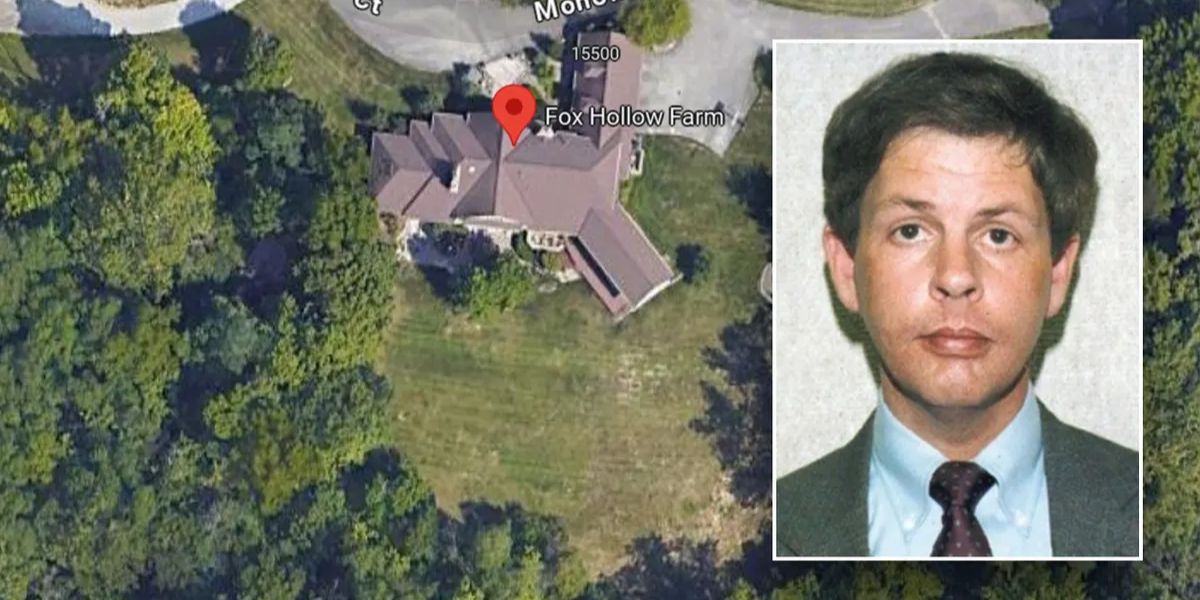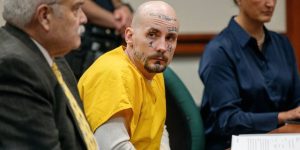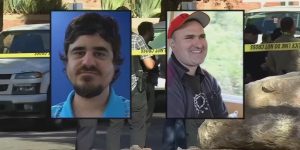An Indiana serial killer’s home was littered with 10,000 “burnt and crushed” skeletal remains, rendering many of his victims faceless for decades.
Herb Baumeister, a successful businessman and married father of three, is suspected of killing at least 25 people between the late 1980s and the early 1990s.
He stalked predominantly gay males in the Indianapolis suburb of Westfield, Indiana, where he lived on an 18-acre property called Fox Hollow Farm.
Four decades later, authorities are still finding secrets hidden beneath the sprawling property. The Hamilton County Coroner’s Office has identified the newest victim, Jeffrey A. Jones, who was reported missing in 1993.
Jeffrey A. Jones, who was reported missing in Fillmore, Indiana in 1993, has been identified as the latest victim of serial killer Herb Baumeister.
Hamilton County Coroner Jeff Jellison has restarted the inquiry into the thousands of human remains discovered on Baumeister’s farm following his death in 1996.
According to Jellison, investigators have four more unidentified DNA profiles, bringing Baumeister’s total body count to 12.
“Because many of the remains were found burnt and crushed, this investigation is extremely challenging,” the county coroner stated in a statement. “However, the team of law enforcement and forensic specialists working the case remain committed.”
Jones became Baumeister’s third victim identified by the Hamilton County Coroner’s Office in the past six months. Herb Baumeister is suspected of killing at least 25 people. So far, twelve victims have been linked to Baumeister.
In December 2023, the coroner’s office recognized Allen Livingston, who was 27 when he went missing in August 1993, and Manuel Resendez in January. Resendez was 34 when he mysteriously vanished in 1996.
Baumeister and his family relocated to the now-infamous $1 million Indiana mansion in May 1988.
15-year-old Arrested for Felony Murder After Botched Robbery Leads to Fatal Shooting
He used the huge terrain and adjacent trail to conceal thousands of decaying remains, burnt bone fragments, and the human skull discovered by Baumeister’s adolescent son and shown to his mother (Baumeister’s wife).
That was the beginning of the end of Baumeister’s reign of terror. Manuel Resendez, 34, who appeared to have gone in 1996, was identified as one of Herb Baumeister’s victims in January 2024.
Baumeister’s wife, who originally prevented law enforcement from examining their property, eventually divorced Herb as it became evident that he was a wanted killer. Authorities inspected the property while Baumeister was not present and discovered the remains of many victims.
By 1996, he had a warrant out for his arrest, so he escaped to Ontario and shot himself. He was 49 when he died.
He was never charged with the murders, and he made no admissions in his suicide note. Approximately 10,000 remains of Indiana serial killer Herb Baumeister were discovered on the 18-acre Westfield, Indiana site.
Baumeister led a double life while living, which is a typical tendency among serial killers, according to an FBI investigation from 2005.
Florida FIREFIGHTER COMMITS MURDER-SUICIDE, KILLING WIFE Weeks After Her Revealing Facebook Post
In one existence, he was a regular husband and father. He went to work and returned home.
According to law authorities, Baumeister operated under the alias “Brian Smart” and primarily targeted young, gay individuals he met in clubs.
“The majority of serial killers are not reclusive, social misfits who live alone,” according to an FBI report from 2005. “They are not monsters and may not appear unusual. Many serial killers lurk in plain sight among their communities.
“Serial murderers frequently have families and homes, are gainfully employed, and appear to be regular members of society. Because many serial killers can blend in so well, they are frequently overlooked by law authorities and the general public,” the research said. Approximately 10,000 remains of Indiana serial killer Herb Baumeister were discovered on the 18-acre Westfield, Indiana site.
The Hamilton County Coroner’s Office is still sorting through the corpses. Dr. Krista Latham of the University of Indianapolis’ Biology & Anthropology Department, as well as DNA experts from the Texas-based Othram Lab, all contributed to the identification of the remains.
Othram, the country’s largest forensic genetic genealogy lab, collaborated with the Hamilton County Coroner’s Office last year to provide closure to Baumeister’s victim dailyadvent reported.
“Othram scientists developed a comprehensive DNA profile for the unknown man using Forensic-Grade Genome Sequencing,” Oram remarked. “After completing the process, the DNA profile was delivered to the FBI’s forensic genetic genealogy team and the FBI team performed the necessary genealogical research to generate new investigative leads in the case.”














+ There are no comments
Add yours